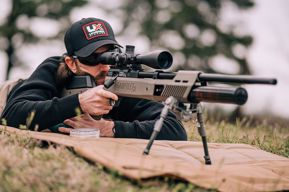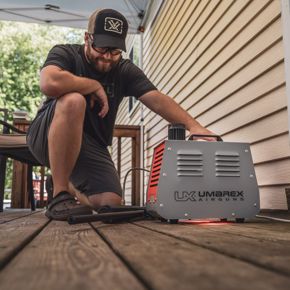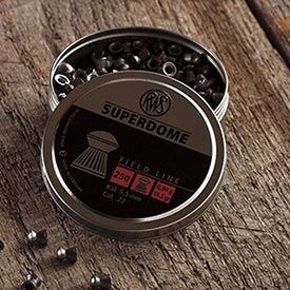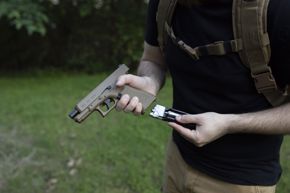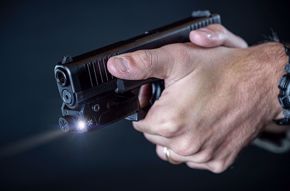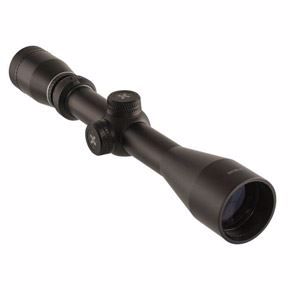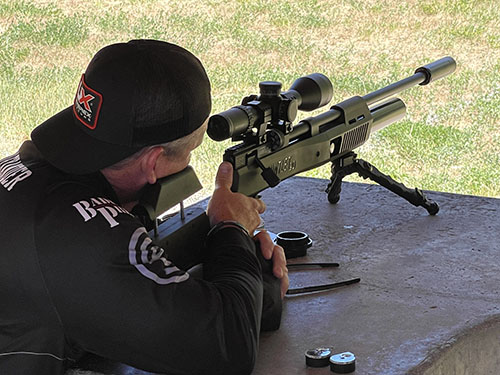 So you’ve got your PCP airgun, read about the Rocky Mountain Airgun Challenge and wonder how to get into the world of benchrest shooting. Well, here’s how to begin in the sport.
So you’ve got your PCP airgun, read about the Rocky Mountain Airgun Challenge and wonder how to get into the world of benchrest shooting. Well, here’s how to begin in the sport.
Airgun Selection
Countless benchrest shooters tell us they started with an Umarex Origin .22. Several have called it the “gateway drug” to PCP shooting.
From there, the Gauntlet .30 is an affordable and accurate option for benchrest.
Many benchrest shoots have a big bore category with shots out to 300-yards. The .50-caliber Umarex Hammer is perfect for that division.
Consistent Shooting Position
Establishing a consistent and comfortable shooting position is crucial for benchrest shooting. Follow these guidelines.
- Body Alignment: Align your body squarely with the target and position your feet in a stable and balanced manner
- Shouldering the Airgun: Place the buttstock firmly against your shoulder, ensuring a consistent contact point for each shot.
- Hand Placement: Maintain a relaxed grip while maintaining control and minimizing disturbances during trigger pull.
- Cheek Weld: Achieve a consistent cheek weld on the stock, aligning your eye perfectly with the scope's eyepiece.
Breathing and Trigger Control
Mastering your breathing and trigger control will significantly improve your shot placement.
- Breathing: Take slow and controlled breaths, aiming to break the shot during a natural pause in your respiratory cycle.
- Trigger Control: Develop a smooth and consistent trigger pull technique, applying gradual pressure without disturbing the sight picture.
Focus and Concentration
Benchrest shooting requires unwavering focus and concentration. Enhance your mental game with the following practices.
- Visualization: Visualize the shot and its desired outcome before pulling the trigger, building mental clarity and confidence.
- Mindfulness: Stay present in the moment, eliminating distractions and maintaining a laser-like focus on the target.
- Mental Preparation: Develop a pre-shot routine that includes visualizing the shot, checking your position, and mentally preparing for each shot.
Data Collection and Analysis

Record and analyze your performance to identify areas for improvement and track your progress:
- Shot Grouping: Use a target with clearly defined aiming points to assess shot grouping and identify patterns or inconsistencies.
- Shot Logs: Maintain a shot log to record variables such as pellet choice, wind conditions, and any adjustments made.
- Data Analysis: Analyze your shot logs to detect trends, make data-driven decisions, and refine your shooting technique accordingly.
Practice with Purpose
Dedicated and deliberate practice is key to honing your benchrest shooting skills:
- Dry Fire Practice: Practice your shooting technique without live ammunition, focusing on consistency, trigger control, and sight picture.
- Range Sessions: Regularly visit the shooting range to practice shooting at various distances and under different environmental conditions.
- Drill Exercises: Incorporate specific shooting drills, such as timed sequences or shooting from various shooting positions, to enhance your skills.
Extras
- For 100-yard matches, many shooters will place aids on their lane to identify wind patterns. These range from streamers on simple posts to plastic windmills.
- Bipods and other rests are a must on the front of the rifle. Most competitors use sandbags under the buttstock as well.


